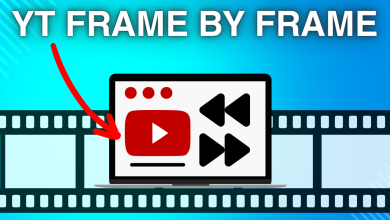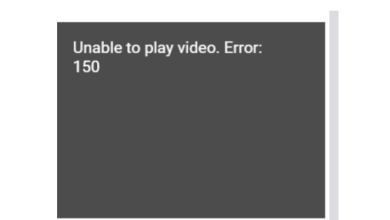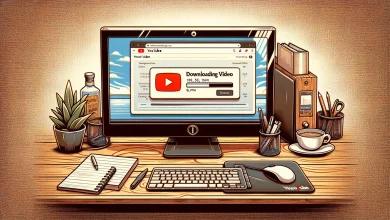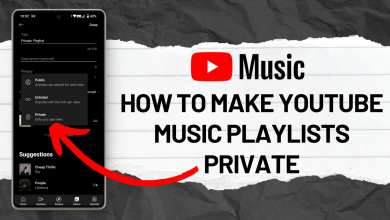Fix: YouTube Videos Not Playing on Windows 7, 8, or 10
YouTube is considered the only giant in the video streaming industry where it is renowned for its unparalleled video experience. It offers cross-platform portability and earns millions through its ad revenue. It has become the ‘go-to’ spot for all kinds of video streaming.

We received many reports that users were unable to play YouTube videos in their Windows browser (in most cases, Chrome). The reasons why this might happen are countless; ranging from the quality to your browser configurations. We will start with easiest workaround and work our way to more technical solutions. Take a look.
Solution 1: Checking your Network Connection
Before we start making changes to your system, it is necessary that you ensure that you have a working internet connection. If your internet connection is very slow, the video might be stuck in a ‘buffering state’ and might never play whatsoever.
So make sure that you have a good internet connection, the quality of displaying the video is low, and you are not using any kind of VPN’s. VPN’s are known to cause problems as they try to redirect your traffic via a proxy and this affects the streaming from YouTube. Once you are absolutely sure that your network is working as expected, only then proceed with the other solutions listed down below.
Solution 2: Checking your Date and Time
YouTube gathers analytics regarding your streaming activity and gets a timestamp from your computer whenever you view, comment, or upload a video. If the time is not set correctly on your computer, this might cause errors and YouTube might refuse to play videos on your computer. Make sure that your computer time is correct and then try playing again.
- Press Windows + R, type “control” in the dialogue box and press Enter.
- Once in control panel, select “Date and Time” or “Clock and Region” according to the type of control panel selected.

- Once the clock is opened, click “Change date and time”. Now set the correct time and also select the correct region.

- Press ‘Apply’ after implementing all the changes and check if you can successfully stream videos on YouTube.
Solution 3: Disabling AdBlockers
Adblockers are becoming increasingly popular in the modern age where they try to block ads on websites to give you a clean browsing experience. As we all know, YouTube also makes use of streaming ads and if the adblockers and YouTube clash, the streaming website might refuse to send data to your computer and may cause the video not playing. You should also check your browser extensions.

To check your browser extensions on Chrome, type “chrome://extensions” in the address bar and press Enter. You can disable any extension by unchecking the “enable” option. This will automatically disable that extension from making any changes to your UI. Restart your browser and check if streaming videos is possible.
Solution 4: Deleting AppData
Every application has its copy of application data stored on your computer which contain all the preferences unique to your account. The application/website fetches this data from the folder and uses it to optimize and customize your experience. It is possible that the AppData of Google Chrome is corrupt and because of this, you are experiencing difficulties. We can try clearing the folder and see if this does any trick.
- Press Windows + R to launch the Run application. Type “%appdata%” in the dialogue box and press Enter.
- Press AppData present at the address box present at the near top of the screen to be navigated to the previous page. Then open the folder “Local”.

- Now navigate to the directory Local > Google > Chrome > User Data and empty the entire folder. You can also cut-paste the contents to a safe location so you can backup in case something goes wrong.

- Power cycle your computer and check if this solves the streaming problem.
Solution 5: Clearing Browser data
Browser data contains all the information about the websites you have visited, cache, passwords etc. and are used by all websites to optimize their viewing experience based on your history. If there are any problems, we can try clearing the browsing history and check if this makes a difference.
Note: Following this solution will erase all your browsing data, cache, passwords etc. Make sure you have all those backed up before you proceed with this solution.
We have listed a method on how to clear the browsing data in Google Chrome. Other browsers may have slightly different methods to clear the data.
- Type “chrome://settings” in the address bar of Google Chrome and press Enter. This will open the browser’s settings.
- Navigate to the bottom of the page and click on “Advanced”.

- Once you are at the advanced menu, navigate down and select Clear browsing data.

- Make sure that all the checks are enabled in the new popup and the time range is set to All time. Click Clear data to delete all your browser data.

- Now power cycle your computer completely and try streaming videos from YouTube.
Solution 6: Using VLC
If because of some reason you are still unable to stream videos on YouTube, you can use VLC player to stream YouTube videos. Of course, you will not have the same functionality and control over quality as per the website but the video will still be playable.
- Navigate to the YouTube page and copy the URL of the video you want to watch.
- Launch VLC players and select “Open Network Stream”.

- Paste the URL you just copied and press Play. The VLC player will now buffer the video and get it playing for you in no time.

In addition to the above solutions, you can also try:
- Enabling hardware acceleration on your browser and checking software rendering.
- Checking the streaming on another browser which is on the same network. Make sure that there are no firewall rules by your organization to restrict the viewership of YouTube.
- Disable all plugins in your browser.
- Make sure that the browser is updated to the latest build available out there.
- Enable JavaScript and Adobe Flash Player.
- Make sure that your graphics and sound driver are updated to the latest build.
- Increase your Virtual memory.
- Reinstall your browser completely after deleting all the temporary files.
- Making a new user account and checking if streaming is possible there.





